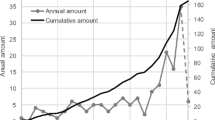Abstract
Reliability is an applied scientific direction. Here, the methods of research of systems under conditions of occurrence and elimination of random events are used and developed: failures of components of these systems. Basic research methods and conclusions of reliability theory are of general nature and can be applied in any field of engineering. In this paper, a team of authors considered an urgent problem of modern production, which is an overestimated number of full-scale tests, which entails an increase in the cost of products. The aim of the work is to create a method for evaluating complex technical systems based on the results of testing its elements, in particular electrical circuits. The practical significance of the work is expressed in the application of the method in analytical calculations of the reliability of component parts based on test data in the design of new complex technical systems and complexes. Also, in the work, the types of system failures are briefly considered and classified, and a method for experimental assessment of system reliability is given. The most significant factors for the stage of statistical processing are considered and analyzed. The following is a review of the literature on the issue under study and several examples of the use of the method in practice, with confirmation of the accuracy of the result by practical testing. As a result of the work, it was obtained that if the estimates of the probabilities of failure-free operation of all elements of the system are the same, then the estimates of the probabilities of the states of systems with a failure of the same number of elements are also the same. As a conclusion, practical recommendations on the application of the method are presented, but also the experience of the authors in the operation of complex technical systems shows that the operational reliability is almost always lower than the level obtained from the calculation results. The inaccuracy is explained by the imperfection of the production technology and the low reliability of reference information.



Similar content being viewed by others
Data availability
Data sharing is not applicable to this article as no new data were created or analyzed in this study.
References
Brookse F (1986) No Silver Bullet — Essence and Accident in Software Engineering. Proc of the IFIP Tenth World Comp Conf 1069–1076.
Kiselev M, Levitsky S, Shkurin M (2022) Influence of control system algorithms on the maneuvering characteristics of the aircraft. Aerosp Syst 5(1):123–130
Strelets DY, Serebryansky SA, Skurin MV (2019) A digital approach to aircraft product lifecycle management. Proc of 2019 12th Int Conf "Man of Large-Scale Syst Dev" MLSD 2019 8911020.
Druzhinin GV (2007) Reliability of automated systems. Energia, Moscow, Russia.
Muskhelishvili GN, Cherkesov GN (2009) Methods and means of controlling the processes of separation of isotope mixtures in packing columns. Metsniereba, Tbilisi, Georgia.
Vokhidov A, Churakova E (2021) Problems of ensuring the operation of load units of irrigation stations and large mechanical units. J Balkan Tribol Assoc 27(5):838–847
Pavlov IV (2012) Statistical methods for assessing the reliability of complex systems based on test results. Radio and Communications, Moscow, Russia.
Amosov AG, Golikov VA, Kapitonov MV, Vasilyev FV, Rozhdestvensky OK (2022) Engineering and analytical method for estimating the parametric reliability of products by a low number of tests. Invent 7(1). https://doi.org/10.3390/inventions7010024
Vyshegorodtseva GI, Ageeva VN (2018) Workshop on the basics of reliability of technical systems. Methodological guidelines for practical work and independent work for students of the Faculty of Engineering Mechanics. Gubkin Russian State University of Oil and Gas, Moscow, Russia.
Sidnyaev NI (2011) Theory of experiment planning and analysis of statistical data: textbook. manual. Yurayt, Moscow.
Volodarsky VA (2019) Finding distribution functions with incomplete initial information about failures of railway automation and telemechanics devices. Aut in Transp 5(1):7–17
Kuatov BZ, Kusainov AB, Suleimenov EA, Nurzhanov DH (2016) Complex indicators of reliability of aviation equipment. Proc of the Int Symp "Rel and Qual" 2:253–257.
Levashkin D, Vasilyev F (2020) Economic efficiency of the application of additive technologies based on laser direct metal tooling in the production of aircraft parts. IOP Conf Ser: Mat Sci and Eng 734(1). https://doi.org/10.1088/1757-899X/734/1/012008
Kapitonov MV (2021) Mathematical model of the kinematics of turning of wheeled construction equipment with real and ideal control systems for steering the wheels of a semi-trailer. AIP Conf Proc 2402(1):020012. https://doi.org/10.1063/5.0071308
Kapitonov MV (2021) Course-keeping ability of heavy transport units with an arbitrary number of links. AIP Conf Proc 2402(1):030016. https://doi.org/10.1063/5.0071336
Vasilyev FV, Medvedev AM, Barakovsky FA, Korobkov MA (2021) Development of the digital site for chemical processes in the manufacturing of printed circuit boards. Inv 6(3):48. https://doi.org/10.3390/inventions6030048
Komarevich LV, Gritsenko DV, Gorokhov AV, Makarova LV (1999) Assessment of the quality of functioning of a complex aircraft system based on test results. Omsk Sci Bull 7:31–32
Golikov VA (2021) Classification of indicators of reliability of systems in heavy engineering. J of Phys: Conf Ser 1889(4):042069. https://doi.org/10.1088/1742-6596/1889/4/042069
Mikhailova EV (2021) Parametric restrictions on industrial cleanliness of technological equipment in mechanical engineering. J of Phys: Conf Ser 1889(4):042063. https://doi.org/10.1088/1742-6596/1889/4/042063
Kapitonov MV (2022) Evaluation and analysis of risks in automotive industry. Transp Res Proc 61:556–560. https://doi.org/10.1016/j.trpro.2022.01.090
Golikov VA (2021) Maintainability of individual assembly units in mechanical engineering. AIP Conf Proc 2402(1):020006. https://doi.org/10.1063/5.0071634
Funding
The authors have not disclosed any funding.
Author information
Authors and Affiliations
Corresponding author
Ethics declarations
Conflict of interest
Not applicable.
Rights and permissions
Springer Nature or its licensor (e.g. a society or other partner) holds exclusive rights to this article under a publishing agreement with the author(s) or other rightsholder(s); author self-archiving of the accepted manuscript version of this article is solely governed by the terms of such publishing agreement and applicable law.
About this article
Cite this article
Amosov, A., Rozhdestvensky, O. Reliability evaluation method of complex technical systems based on test results of disassembled components. AS 6, 335–342 (2023). https://doi.org/10.1007/s42401-023-00212-x
Received:
Revised:
Accepted:
Published:
Issue Date:
DOI: https://doi.org/10.1007/s42401-023-00212-x




